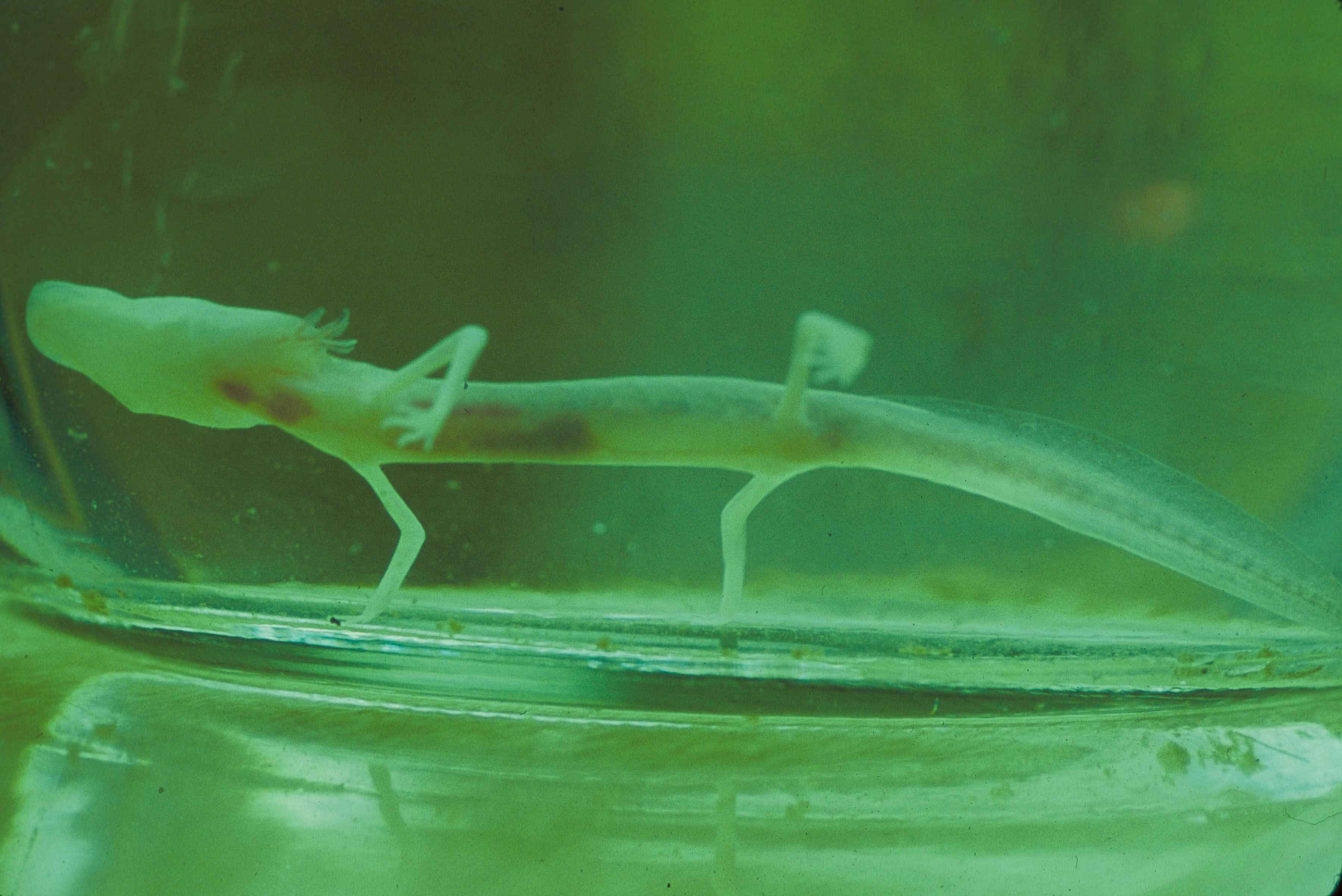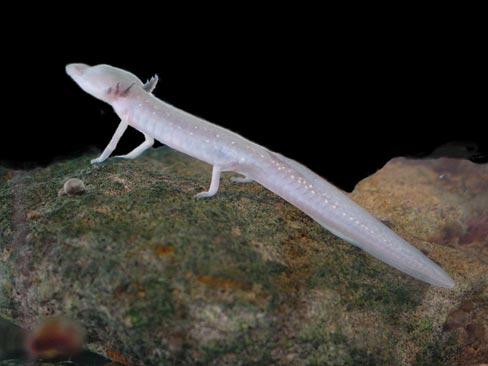Adaptation
Living underwater in a cave environment with no light has caused
the Texas Blind Salamander to develop some seriously cool
adaptations that allow it to survive and thrive in what we would
think of as a very alien and forbidding environment. Since
there is no light that comes in at all, even if the salamanders
had “real” eyes, they wouldn't be able to see. As a
result, over a long period of time, their eyes became weaker and
weaker. They still have eyes which appear beneath their
skin as little black dots but they are non-functional, a remnant
from a time when their ancestors lived aboveground. They
also lost most of the pigments that color their skin and as a
result are a pale, white color (Edwards Aquifer Species
2003).
To help them survive in their all water environment, they developed external
gills so they would be able to spend all of their time underwater without
having to return to the surface to get more oxygen. These gills are
the only part of the salamanders that aren't white (besides their black
vestigial eyes) (Edwards Aquifer Species 2003)(Springer 2007).
They are blood red because their blood moves though the gills very close to
the surface of their skin and this enables them to absorb dissolved oxygen
from the water into the blood through the skin of the gills and transport it
through the rest of their bodies.
Their watery environment also caused their legs to become very thin.
Because the water helps to support the salamanders above the ground, they
don't need as much strength in their legs to support themselves. Their
tails also developed into a wide, thin fin-like shape to help them propel
themselves through the water (Texas Blind Salamander – National
Wildlife Federation 2014).
When the time comes for these creatures to go hunting you might think that
they would have a hard time, not being able to see, but they have developed
their own specialized hunting strategies which enable them to be the top
predators of their environment. They crawl along the bottom of the
caves moving their heads back and forth “looking” for food. When a
creature is encountered, their mouths open up quickly and suck up the
unfortunate organism. and they also have many, many sharp teeth to prevent
their prey from escaping once they have captured it in their mouths (Edwards
Aquifer Species 2003).
Another problem that, as a blind species, the Texas Blind Salamander has had
to overcome, is how they locate each other and tell males and females apart,
which is very important for mating purposes. The salamanders can read
chemical cues in the water which help them to identify members of their own
species and even whether they are male or female, which is really important
for reproduction (Epp et al. 2010).
